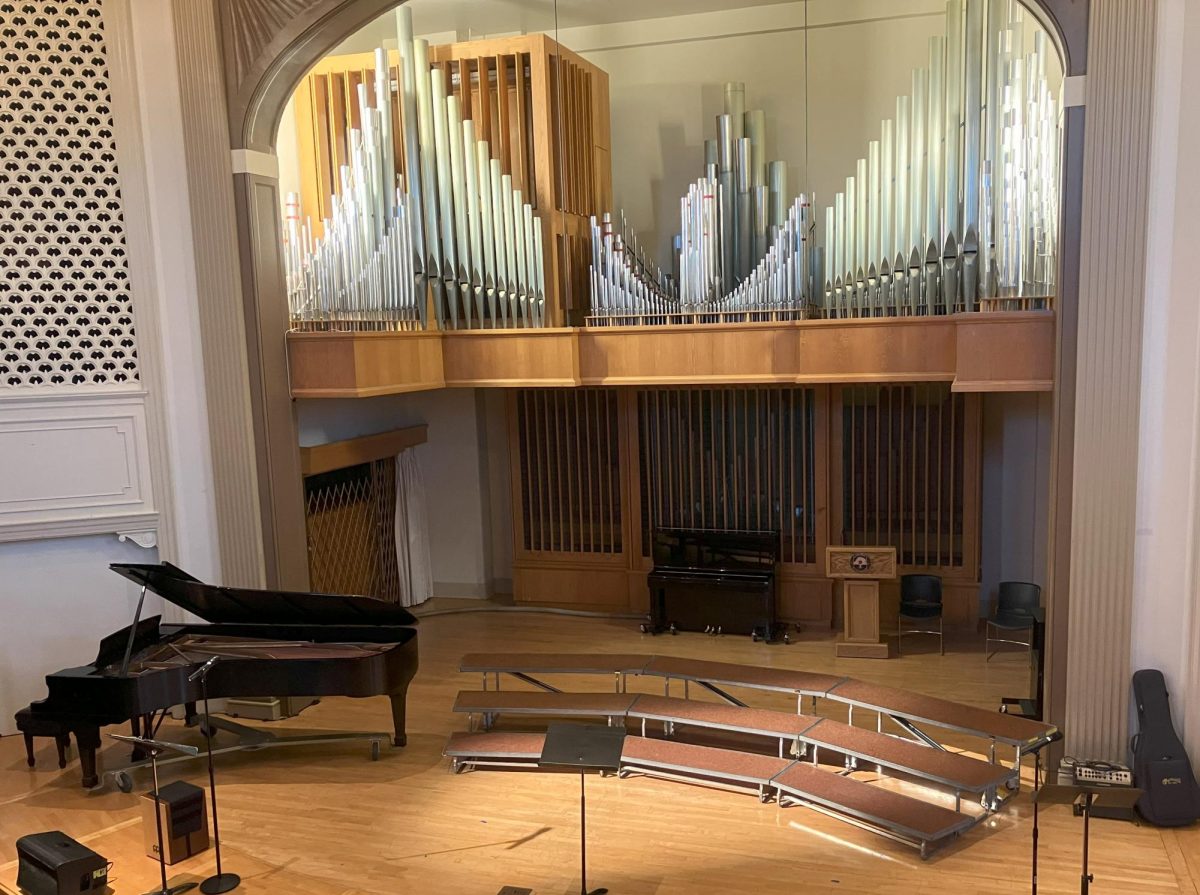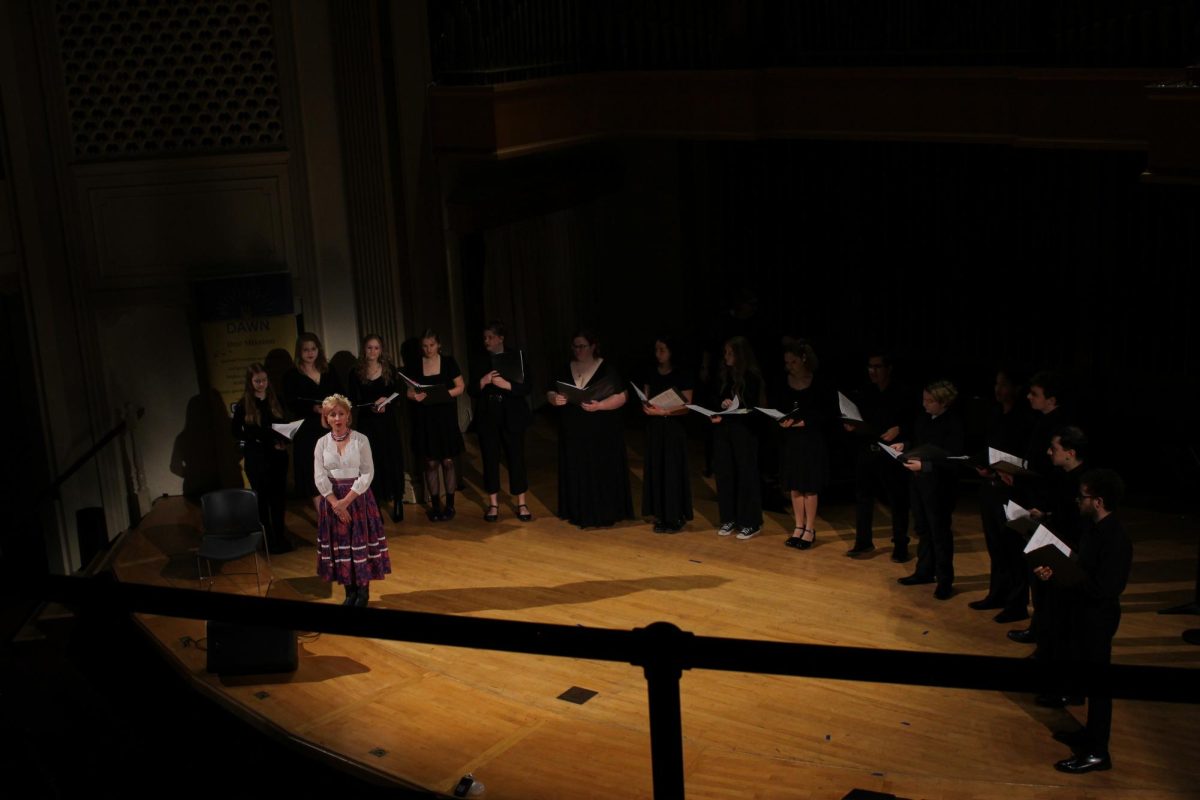A seasoned former journalist introduced Linfield to a piece of covered-up history of massacred Chinese gold miners in the American West in the 1880s during a guest lecture in Nicholson Library on April 1.
Based on this piece of history, Gregory Nokes, who spent 15 of his 43 years in journalism at The Oregonian, discussed his book, “Massacred for Gold: The Chinese in Hells Canyon,” and shared his journal of the history of Chinese immigrants in the late 19th century and the beginning of the 20th century.
On May 25, 1887, after the Chinese Exclusion Act of 1882, more than 30 Chinese gold miners were massacred on the Oregon side of Hells Canyon by seven rustlers and schoolboys from Imnaha. One of the murders was a 15-year-old boy. Three of the killers were found innocent, another three fled and were never caught and the other was not charged.
Listed as one of the top 10 in the Pacific Northwest last year by The Oregonian, “Massacred for Gold” tries to correct one of the darkest episodes in Oregon’s sordid history of race relations.
“Why would a gang of outwardly respectable ranchers and schoolboys plot the slaughter of nearly three dozen defenseless Chinese when they easily could have robbed them without the bloodshed?” Nokes read from his book.
Nokes said “secret keepers” preferred to tell how amazing the Pioneer Square was instead of explaining how people they knew threw Chinese gold miners’ bodies. As secret keepers said, much of the facts about the event have been forgotten.
Secret keeper Frank Vaughan explained that the Chinese were killed because they refused to loan the gang a boat, according the to book.
Nokes’ book stated that only 11 of the dead miners were found. They were never a part of the “American dream.”
“Even if we can’t learn their names, we should be able to learn their stories,” Nokes said. “Our history books still have blank pages.”
People seem grateful for Nokes’ book.
“I am glad to see there is an effective voice for forgotten history with investigation, a besides long history of China town in Oregon,” Jeremy Sitinoda said, whose grandmother is originally from China and now is working in McMinnville.
Freshman Julie Schoettler, who attended the lecture, said she was upset at the murders who killed the Chinese miners, although she understands the historical background of what happened in that time.
Nokes said he spent a decade researching and made two dozen trips to Wallowa County, Ore., to discover what really happened and why some people tried to cover it up years later, according to The Oregonian.
“After I wrote stories for newspapers and magazines about this history, I realize it’s not known at all,” Nokes said. “I couldn’t leave it just as a news story.”
He also said that it was tough to write the book, especially as a journalist, because much history is cruel without justification.
“A lot of Chinese immigrants in big cities in the Northwest [have experienced] violence and exclusion, and competitions of living is not an excuse [for a local American] to do that,” Nokes said.
Yin Xiao
Culture editor Yin Xiao can be reached at [email protected]






